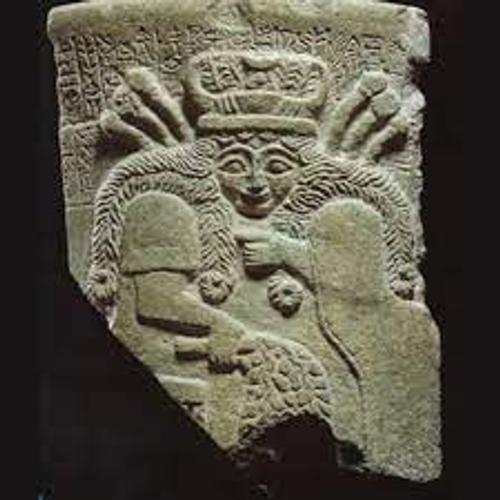
The Morgan Library & Museum will present She Who Wrote: Enheduanna and Women of Mesopotamia, 3400-2000 BC opening September 10, 2021, and running through January 16, 2022. The exhibition brings together for the first time a comprehensive selection of artworks that capture the rich and shifting expressions of women’s lives in ancient Mesopotamia during the late fourth and third millennia BC. It centers on the high priestess and poet Enheduanna (who flourished around 2300 BC) the world’s first author known by name, who wielded considerable religious and political power.
Presenting a spectacular collection of her texts alongside other works made circa 3400–2000 BC, She Who Wrote celebrates Enheduanna’s timeless poetry and abiding legacy as an author, priestess, and woman, while bearing testament to women’s
diverse roles in religious, social, economic, and political contexts—as goddesses, priestesses, Enheduanna received her name, which means “high priestess, ornament of heaven” in Sumerian, upon her appointment to the temple of the moon god in Ur, a city in southern Mesopotamia, in present-day Iraq. The daughter of the Akkadian king Sargon (ca. 2334–2279 BC), Enheduanna left an indelible mark on the world of literature by composing extraordinary works in Sumerian. Her poetry reflected her deep devotion to the goddess of sexual love and warfare—Inanna in Sumerian, Ishtar in Akkadian. Whereas much of ancient Mesopotamian literature is unattributed, Enheduanna introduced herself by name and included astonishing autobiographical details in several poems. Her passionate voice had a lasting impact in Mesopotamia, as her writings continued to be copied in scribal schools for centuries after she died.
In addition to texts by Enheduanna, She Who Wrote: Enheduanna and Women of Mesopotamia, 3400-2000 B.Cincludes artworks referencing her name and image, as well as representations of women from the earliest Mesopotamian cities. These works reflect painstaking artistry and striking stylistic variety, often combining delicately executed naturalism with powerfully expressive stylization. They have withstood millennia, providing insight into an often-overlooked aspect of an ancient patriarchal society: womanhood.
Highlights in the exhibition include Fragment of a vessel with frontal image of goddess from the Early Dynastic IIIb period (ca. 2400 BC). This vessel fragment shows one of the first images of an anthropomorphic goddess created in Mesopotamia. The divine nature of the figure is expressed by the horned crown with feathers (or fronds) and an animal head, as well as by the
vegetal elements above her shoulders. While the lower half of the goddess’s seated body is shown in profile, her head and torso face forward. She stares directly at the viewer, exuding power and authority. Her voluminous hair and the cluster of dates in her right hand depict her as a goddess of fertility and abundance.
Also included is Queen Puabi’s funerary ensemble, found during the excavation of her tomb in 1927. The ensemble is a feast for the eyes, with its vibrant colors, precious materials, and skilled artisanship. Several wreaths formed of floral and vegetal motifs rested on Puabi’s forehead, with ribbons of thinly hammered gold circling her voluminous hair and gold coils framing her face. At the crown of her head sat a large gold comb, featuring seven delicately curving flowers; large lunate earrings dangled from her ears. These elements encircled Puabi’s head in radiance. A choker with a central rosette sat against her neck, and a profusion of carnelian, lapis lazuli, and gold beads covered her chest, strung in rhythmic patterns. Finally, a belt of beads with a fringe of disks rested against Puabi’s hips.
Equally importantly, the exhibition includes the Disk of Enheduanna from the Akkadian period, ca. 2300 BC. The partially preserved inscription on one side of this disk was recovered from a copy on an Old Babylonian (ca. 1894–1595 BC) tablet, recorded hundreds of years after the disk’s dedication by Enheduanna. The scene carved on the opposite side shows an open-air sacred precinct with a multistory edifice at left. Enheduanna occupies the center, depicted slightly larger than her attendants to reflect her status. Two priests behind her carry ritual paraphernalia; the one in front of her pours a libation on an altar. Enheduanna wears a tiered, flounced garment and a headdress in the form of a circlet, both of which became canonical for her successors. Her hand gesture sanctions the ritual. Her well-sculpted visage gazes upward, from the mortal world to the numinous realm of Inanna.
The exhibition is curated by Sidney Babcock, Jeannette and Jonathan Rosen Curator and Department Head of Ancient Western Asian Seals and Tablets at the Morgan and co-curated by Erhan Tamur, Curatorial Research Associate for the Department. Babcock said, “Ehneduanna is nothing less than the first known author in history. That she is not better known is something this exhibition hopes to remedy. The images of women, presented here for the first time as a group, have also been often overlooked. It is long past time to focus on the extraordinary artistry of these images as they reflect the contributions of women at the beginning of history. Preparations for this exhibition during the pandemic have been a challenge. I am deeply grateful to my colleagues at the Morgan and at the many national and international lending institutions for their enthusiastic support for this groundbreaking effort.”
“We are thrilled to present She Who Wrote: Enheduanna and Women of Mesopotamia here at the Morgan Library & Museum.” The Morgan’s Director, Colin B. Bailey, said, “This exceptional exhibition brings to light rich histories and important narratives. As not only a museum, but a historical library, the Morgan serves as the perfect venue for the first exhibition devoted to the world’s first author known by name, Enheduanna.”
An array of engaging public programs will accompany the exhibition. Please visit www.themorgan.org for further details.
No comments:
Post a Comment